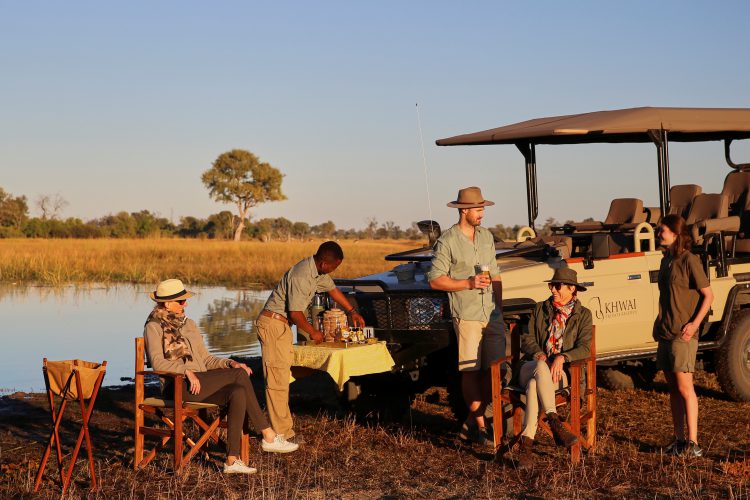This time of year many of our clients are anticipating their upcoming safaris, and the questions about “what to pack” are coming in fast and furious! Packing for a safari can be a real challenge as you have figure out how to fit your camera equipment, binoculars, medications, as well as various layers of clothing in a duffel bag that ideally will weigh around 35 pounds!
Why Are The Luggage Restrictions on Safari So Strict?
The light aircraft flights that often take guests from camp to camp 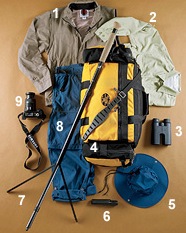 have strict luggage limits in place. Without venturing into the exact sciences of aerodynamics, an aircraft is restricted to a maximum total weight for both take-off and landing for safety reasons. The total weight is made up of the actual weight of the aircraft, plus the fuel required for the journey and lastly the allowable balance of weight remaining for passengers and luggage. Pilots personally store guests’ luggage in the hold and bags need to be soft sided in order to fit all passengers’ belongings into the small cargo space and to ensure the plane is carefully balanced for safety. Therefore the size and weight of each bag as well as each passenger’s weight is critical to ensuring the safety of the flight.
have strict luggage limits in place. Without venturing into the exact sciences of aerodynamics, an aircraft is restricted to a maximum total weight for both take-off and landing for safety reasons. The total weight is made up of the actual weight of the aircraft, plus the fuel required for the journey and lastly the allowable balance of weight remaining for passengers and luggage. Pilots personally store guests’ luggage in the hold and bags need to be soft sided in order to fit all passengers’ belongings into the small cargo space and to ensure the plane is carefully balanced for safety. Therefore the size and weight of each bag as well as each passenger’s weight is critical to ensuring the safety of the flight.
Luckily many safari lodges offer laundry services which means you can pack for 3 days even if you are on safari for 6! Laundry is dried by the sun and on most days, laundry services requested in the morning will be returned by the evening (washed, dried and ironed). In addition, a safari is not a “dressy” affair and even the most luxury lodges will not expect you to dine in anything fancier than khaki pants or even jeans and a shirt. Personal toiletries (basic amenities) are often supplied by most camps in an endeavor to provide environmentally sound products that will not damage the fragile ecosystems you are visiting. This helps lighten your load as well.
If you have been shopping in Cape Town before you start your 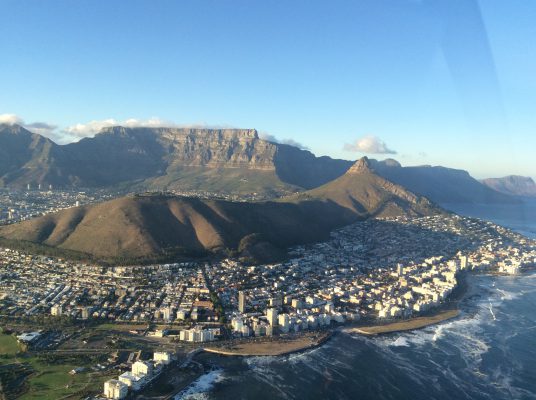 safari there are baggage services than can transport your bag safely to Johannesburg or any other airport, for you to pick up after your safari. Most charter companies will keep your excess luggage for free while you are on safari however, you’ll need to ensure you are returning to the same airport you’ve stored your luggage at! If you are a keen photographer or just cannot quite figure out how to pack light, you can always look into renting a lens locally (very affordable in South Africa and also available at Wilderness Safaris camps, Great Plains camps and several others). If you really can’t conceive how you will manage these luggage restrictions, consider buying an extra seat to accommodate your excess equipment and other belongings.
safari there are baggage services than can transport your bag safely to Johannesburg or any other airport, for you to pick up after your safari. Most charter companies will keep your excess luggage for free while you are on safari however, you’ll need to ensure you are returning to the same airport you’ve stored your luggage at! If you are a keen photographer or just cannot quite figure out how to pack light, you can always look into renting a lens locally (very affordable in South Africa and also available at Wilderness Safaris camps, Great Plains camps and several others). If you really can’t conceive how you will manage these luggage restrictions, consider buying an extra seat to accommodate your excess equipment and other belongings.
The Basics…
- Wear comfortable clothes that you don’t mind getting dusty.
- Avoid bright colors and white (Bright colors can startle the animals you are
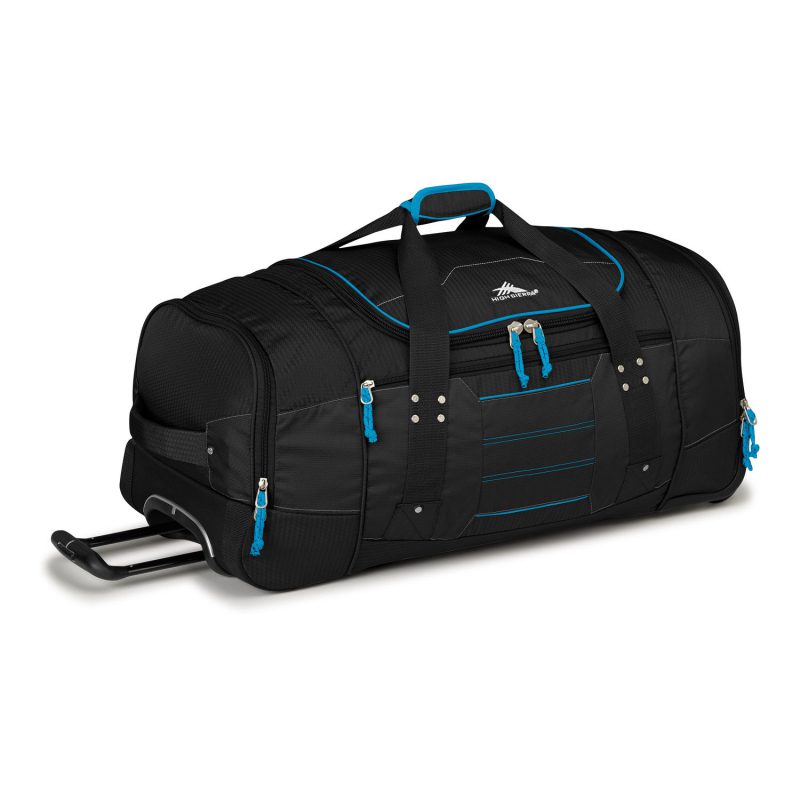 wanting to see).
wanting to see). - Camouflage or military-inspired clothing is not recommended for travel in African countries
- Bring a good sunhat with a chin strap to avoid losing it (you’ll likely be in open vehicles).
- Bring clothes for just three days (laundering is usually available and things dry fast in the sun).
- Bring a swimsuit as many lodges and camps have swimming pools.
- You’ll want a pair of good closed walking shoes (sneakers/running shoes are fine).
- Pack light in soft, small-medium bags (small aircraft cannot accommodate suitcases).
- Don’t invest in expensive new luggage, it will get dusty and bumped about.
- For environmental reasons, plastic bags have been banned in Botswana, Kenya, Namibia and Rwanda , the customary plastic duty-free bags included.
- During the dry season (winter months from May – August) dress in layers and bring a warm jacket, a scarf, gloves and beanie/woolen hat; the early mornings and evenings can be quite chilly on safari in an open vehicle.
The Detailed List …
Clothes for Women
- 4 t-shirts
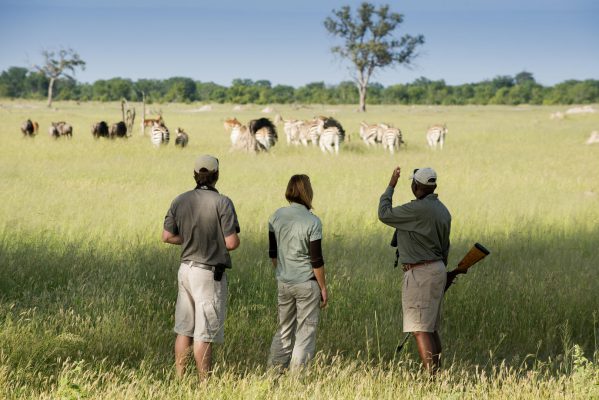
- 2 long sleeve shirts
- 1 sweatshirt/fleece
- 1 pair of comfortable shorts
- 2 pairs of cotton trousers/pants
- 1 cotton wrap (great to wear during the afternoon siesta, buy locally if you can and they make perfect gifts)
- 2 pairs of socks
- 4 pairs cotton underwear (safari camps will not wash your “smalls” but you can do this yourself and dry overnight)
- 3 sports bras (VERY bumpy roads)
- Very thin waterproof raincoat if traveling during the wet season
- Sunglasses (for the dust as well as bright sun)
- Flannel pajama pants for the chilly nights
- Hat with chin strap (to avoid it blowing off your head and into the bush)
- Swimsuit
- Lightweight, durable, closed shoes
- Flip flops or sandals for around camp, (or to wear in the shower)
Clothes for Men
- 4 t-shirts
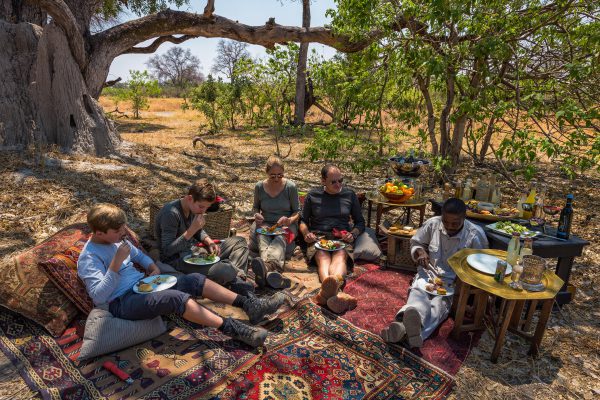
- 2 long sleeve shirts
- 1 sweatshirt/fleece
- 1 pair of comfortable shorts
- 2 pairs of cotton trousers/pants
- 3 pairs of socks
- 4 pairs underwear (you can wash and dry overnight)
- Flannel pajama pants for the chilly nights
- Very thin waterproof raincoat if traveling during the wet season
- Sunglasses (for the dust as well as bright sun)
- Hat with chin strap (to avoid it blowing off your head and into the bush)
- Swimsuit
- Lightweight, durable, closed shoes
- Flip flops or sandals for around camp, (or to wear in the shower)
Toiletries/First Aid
Every camp or lodge will have a basic first aid kit on hand, and most safari vehicles will too. But it’s handy to bring your own small supply of hand gel, band aids, aspirin etc…
- Malarial prophylactics
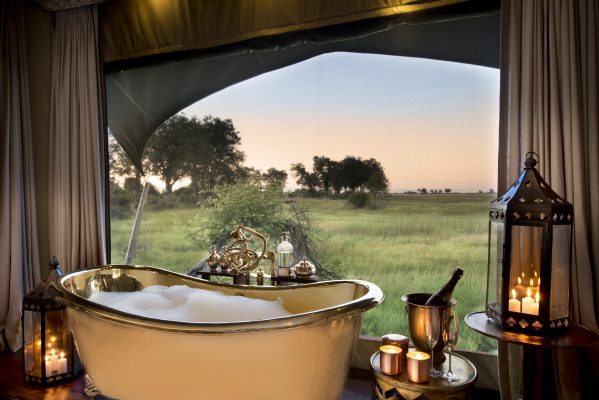
- Sunscreen (Factor 30 or above)
- Antihistamine (for bug bites/stings and allergic reactions)
- Aspirin/Motrin/Tylenol for pain/headaches
- Mosquito Repellent
- 3 one gallon ziplock (or cloth if plastic is prohibited) bags (to keep things like your camera dry or free of dust and your dirty clothes separate)
- Tampons/Sanitary Pads for women
- Antiseptic gel (handy for washing your hands when there’s no water around)
- Anti-diarrheal medication
- Band aids with antiseptic cream
- Personal toiletries are available at all luxury camps and lodges, which they prefer you to use
- Prescription medications
- Spare glasses if you wear contacts (just in case it is dusty which can make it uncomfortable)
Gadgets and Gizmos
- Converter plug to fit local sockets so you can recharge your phone, camera battery, i-Pad
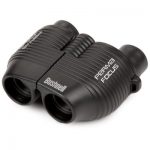
- Small Flashlight (when walking to and from your room at night, and to use inside your tent, although most camps will provide a flashlight for your use. Your cell flashlight may come in handy as well)
- Camera (with zoom lenses and tripod if you’re serious, but remember the weight restrictions for flights)
- Extra memory card for your camera (you’ll take more video and photos than you ever thought possible)
- Binoculars (luxury camps will usually have a spare pair in the safari vehicles for you to use)
- Spare batteries and/or battery charger (always check to see what the camp has, or safari vehicle)
- I-Pad or similar device for your books, to store your photos, alarm clock, and sound recording (fun if you have a lot of wildlife around your camp/lodge at night, it gets loud!)
- Cell phone with local plan (optional, but handy to connect with family/friends back home). Some camps will not have wi-fi, but may have a cell phone connection
Pack For a Purpose
Many safari camps and lodges now support local community  initiatives in and around the wildlife parks, reserves and concession areas. Please ask if you can bring any school supplies, medical supplies, clothing or other light objects that will help these projects. There’s a website you can check out as well – Pack For a Purpose. They have some good suggestions on how to pack these items, as well as lists of specific requests from lodges around Africa.
initiatives in and around the wildlife parks, reserves and concession areas. Please ask if you can bring any school supplies, medical supplies, clothing or other light objects that will help these projects. There’s a website you can check out as well – Pack For a Purpose. They have some good suggestions on how to pack these items, as well as lists of specific requests from lodges around Africa.
More Practical Safari Tips …
